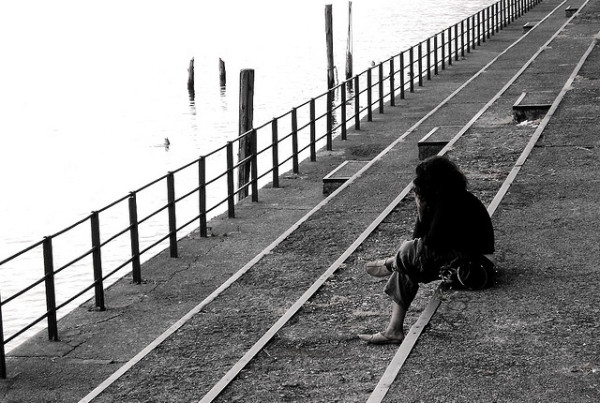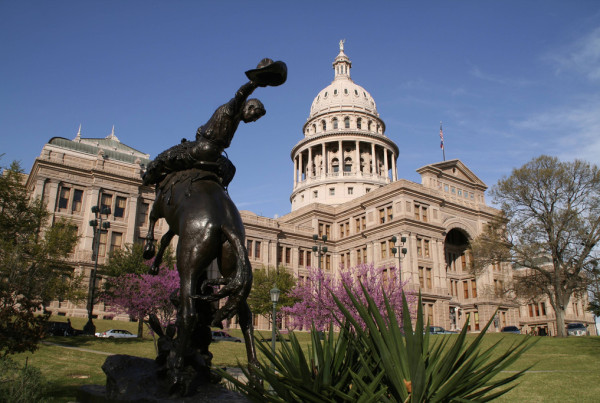Old cars that have little resale value in the United States are being towed in caravans that begin in California, Arizona and Texas, and end up in Guatemala.
The cars are loaded with old bicycles, recycled car batteries and clothing that have been jettisoned in the United States. The vehicles are fixed up in Guatemala and then sold elsewhere across Central America.
The process represents a small but sustainable economy in one particularly impoverished section of Guatemala on that country’s northern border with Mexico.
But the risks travelers face on their week-long trips are severe.
A half dozen drivers interviewed for this story are from Tecún Umán, Guatemala, a longtime way station for contraband and Central Americans headed back and forth between Mexico and the United States.
“I buy those cars in the streets, like broken cars, and I fix myself. That’s the way I make my income,” says Maximo Ortiz, a dual citizen of Guatemala and the U.S., who lives in Tecún Umán.
It’s the town where the Rio Suchiate separates Mexico and North America from the isthmus of Central America.
Ortiz explained he’d stay in the U.S., but his wife doesn’t want to leave home.
“I have no way to work. It’s all I can do, drive and buy stuff and resell it in Guatemala,” he said.
Ortiz is in a caravan snaking its way through the southwest. He started collecting a total of four cars in Los Angeles and San Diego. He bought another in Tucson, Arizona while a partner picked up another vehicle in Van Horn, Texas.
“I buy junk cars like this and fix it and bring it to Guatemala,” he says. “I pay $800 for this one and a $100 on parts.”
What can he expect to fetch for the car at home?
“In Guatemala, easy, $3200,” Ortiz says.
But to get home, he must ford a path through Tamaulipas, the Mexican state that fronts the Texas border. After that, he heads into the oil-rich but violence-prone state of Veracruz on Mexico’s eastern seaboard.
“Actually in Tamaulipas state, it’s bad, the bad part of Mexico for us,” Ortiz said.
He crosses into Tamaulipas at Reynosa near McAllen in the Rio Grande Valley of south Texas. The Mexican Army has been there for the last four years, ostensibly to combat two feuding cartels, the Gulf Cartel and their former enforcers, Los Zetas.
But swaths of Tamaulipas remain under the thumb of organized crime. Ortiz says you can’t tell cops from criminals.
“They work together, you know what I’m saying?” he asks. “Like government, police officers, they took us, money from us, always. Sometimes they take the cars from us. And you know they drop you off, they take you away from the vehicles and they stolen those vehicles, whatever you’ve took with, they’ve taken,” said Ortiz.
An American who crosses into Tamaulipas daily to manage a maquiladora – one of the thousands of border factories in Mexico that produce goods for the U.S. market – says the area is dangerous.
“It’s certainly very intimidating. It’s a no man’s land, like a wild, wild west.”
The man, who asked that we not reveal his name due to security concerns, said the drivers are easy prey in Mexico.
“The drug cartels and the human smugglers, they have a lot of the enforcement agencies in their pocket. And it’s very just scary to not know, when you come across one these guys, whether he’s one of the good ones or one of the bad ones,” he says.
Another Guatemalan driver, Roberto Arica, said he budgets bribe money for trip.
“We’re charged $100 every time we enter Tamauplias,” he says in Spanish.
And not by Mexican customs officers. Arica says organized crime and freelance bandits will stop his car at a makeshift checkpoints to demand money at gunpoint for the right to cross a given territory.
But he says his motivation to provide for his family trumps any concerns about security.
“I have young children who need to eat,” he says.
David Walstrom is a former community development worker in Latin America.
He’s seen old American cars laden with bundled-up newspapers, glass bottles and used car parts as far south as Peru.
“Here, you know, it just ends up in a landfill,” Walstrom says. But not there.
“Things that are tossed away here turn out, in some cases, to be an economic driver in some of these small towns in Latin America,” Walstrom said.
Hundreds of Guatemalans, many of them dual U.S.- Guatemalan citizens, are making this trek during the spring and summer, supporting the economy on one slice of the Guatemala-Mexico border with cars no one wants here.
This story was originally reported by Marfa Public Radio‘s Lorne Matalon.











